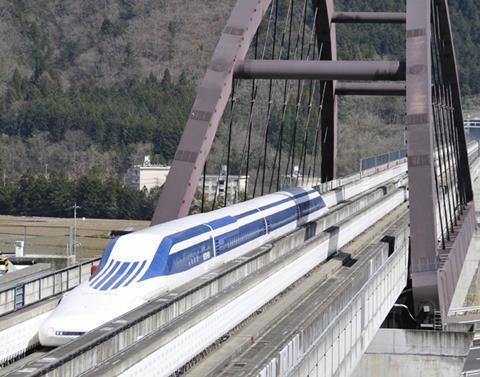
JAPAN: Central Japan Railway announced at the end of March that it no longer expects to start operating high speed superconducting maglev services over the Chuo Shinkansen between Tokyo and Nagoya in 2027.
Speaking after a meeting on March 29 in the transport ministry, JR Central President Shunsuke Niwa said that ‘we cannot project a new opening date’, but promised that ‘we will do everything we can towards launching as soon as possible’.
Niwa pointed out that ‘unfortunately, the situation is not one that will allow us to begin operating to Nagoya in 2027 … Moreover, we cannot estimate a new starting year because we have no idea when we can begin work on tunnel construction within Shizuoka Prefecture.’ Excavating and fitting out the tunnel is expected to take at least 10 years.
Announcement of the delay to the high-profile project follows a refusal by the Shizuoka prefectural government to allow work to commence within the prefecture over fears that construction of nearly 9 km of tunnel in the area would affect the volume of water in the Oi River.
Kyodo News reported towards the end of 2023 that there was some prospect of the prefecture’s concerns being resolved thanks to a proposal from JR Central for a dam to be used to control the flow of water. This had been accepted by the prefectural government, but Kyodo News then reported that further concern arose in December because of a report from the Ministry of Land, Infrastructure, Transport & Tourism suggesting that construction of the maglev project could damage the ecology of the Minami Alps.
On December 14 last year JR Central had revealed that it would ‘change the scheduled completion year from “2027” to “on or after 2027” due to the situation of the Southern Alps Tunnel Shizuoka construction area, where we have not been able to begin tunnel drilling work’. It added that ‘we plan to apply for a change in the scheduled completion year at a later stage once we have an outlook on the approximate completion year’.
















